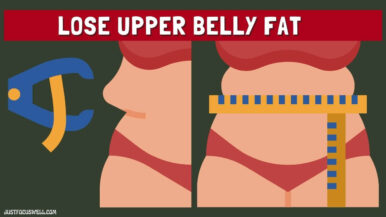7 Powerful Somatic Exercises for Anxiety Relief: Breathe & Heal

Anxiety can trap you in a cycle of stress and overthinking. But physical exercise calms your mind and helps regulate your nervous system. That’s why we will answer your questions through the post 7 Powerful Somatic Exercises for Anxiety Relief: Breathe & Heal.
Table of Contents
What Are Somatic Exercises?
Powerful Somatic exercises connect your body and mind through movement and breathing. These techniques help release stored tension in your body, helping you relax and balance your nervous system. Compared to traditional workouts, these somatic exercises prioritize mindfulness over intensity, allowing you to release stress gradually.
MUST READ- Eat Move Make Food Fitness Travel Lifestyle For Easy To Live
How Somatic Exercises Help with Anxiety
Anxiety activates the body’s fight-or-flight response. This often leads to physical symptoms such as muscle tension, shallow breathing, and restlessness. So, physical exercises target these symptoms.
MUST READ- Most Effective Ways To Flush Out Obesogens Naturally At Home
- Encouraging deep, controlled breathing
- Increasing body awareness and presence
- Relieving muscle and emotional tension
- Regulating the nervous system for long-term resilience
By incorporating these somatic exercises into your routine, you can develop a sense of control over your anxiety and a sense of calm.
Understanding the Mind-Body Connection In Somatic Exercises
Your mind and body are deeply connected. But anxiety starts in the mind and often manifests physically. But physical activity brings awareness to your physical symptoms and helps you to relieve them safely.
1. Why the body sustains trauma
Because the body remembers what the mind forgets, traumatic or stressful events are “stored” in the muscles, tissues, and nervous system. This often leads to feeling chronic stress or hypervigilance.
2. The Neuroscience of the Stress Response
When you are anxious, your sympathetic nervous system activates, like fight or flight mode. While physical activities aim to activate the parasympathetic nervous system (rest and digest), which calms your entire system (body).
7 Effective Somatic Exercises for Anxiety Relief
If you add these somatic exercises to your routine, you will not need to include any other exercise routine.
1. Diaphragmatic breathing

Diaphragmatic breathing, also known as belly breathing, relaxes the body by activating the parasympathetic nervous system.
How to practice:
Sit or lie down comfortably. Place one hand on your chest and the other on your stomach. Then take a deep breath through your nose, causing your stomach to rise. Exhale slowly through your mouth. And feel your stomach fall. Repeat the same pattern for 5-10 minutes, focusing on the breath.
2. Progressive Muscle Relaxation (PMR)

PMR reduces physical tension by systematically relaxing different muscle groups in your body.
Steps:
Find a quiet place and close your eyes. Tense your legs for five seconds and then relax. Move upwards—calves, thighs, stomach, arms—repeating the process. Notice the difference between tension and relaxation.
3. The Voo Sound Technique

This technique uses vocal vibrations to calm your nervous system.
How to do it:
Take a deep breath. And on your exhale, say “woooooo” in a long, steady tone. You will feel the vibrations in your chest. You have to take two normal breaths after each step. Repeat this at least 3-5 times.
4. Grounding Through Body Scanning

Body scanning in this technique shifts the focus from anxious thoughts to bodily sensations.
Practice:
Sit or lie down in a comfortable position. Close your eyes and focus on your toes. Scan slowly from bottom to top, starting with feet, legs, torso, arms, and then breathing. Recognize these sensations. If tension is present, breathe into it and feel it subside.
5. Shaking to Release Tension

Moving helps release tension and nervous energy.
Instructions:
Stand with feet hip-width apart. Start moving your hands, arms, and shoulders slowly. (Right-left, right-left.) Let this movement spread to your legs and torso. Continue for 1-2 minutes. Then stop. And feel relaxed.
6. Butterfly Hug for Self-Soothing

This technique activates the calming response by stimulating both parts of the brain.
How to do it:
Cross your arms over your chest. Place hands on shoulders. Gently tap your hands alternately for 30 seconds. Take slow and deep breaths while tapping.
7. Gentle Somatic Stretching

If you do stretching with careful breathing, it relieves your stress and improves blood circulation in your body.
Simple stretch:
Stand or sit comfortably. While breathing in, slowly raise your arms upwards. While exhaling, slowly bend to one side. Then repeat the same on the other side. After every step, take two normal breaths in between.
Tips for Making Somatic Exercises a Daily Practice
- Start small – just 5 minutes a day can make a difference.
- Adjust your exercises to your routine.
- Set reminders to practice, especially during stressful moments.
- Combine the exercises with calming music for a deeper effect.
If you set up your exercise routine like this, you won’t have to put in much effort.
Final Words
Anxiety can feel overwhelming. But your body is the key to staying calm. These 7 powerful somatic exercises are tools you can do anytime, anywhere. With consistent practice, you can strengthen your mind and body, regulate your nervous system, and find peace.
Remember: healing is a journey. Be gentle with yourself as you learn to feel safe in your mind, your body, and your breath again.









